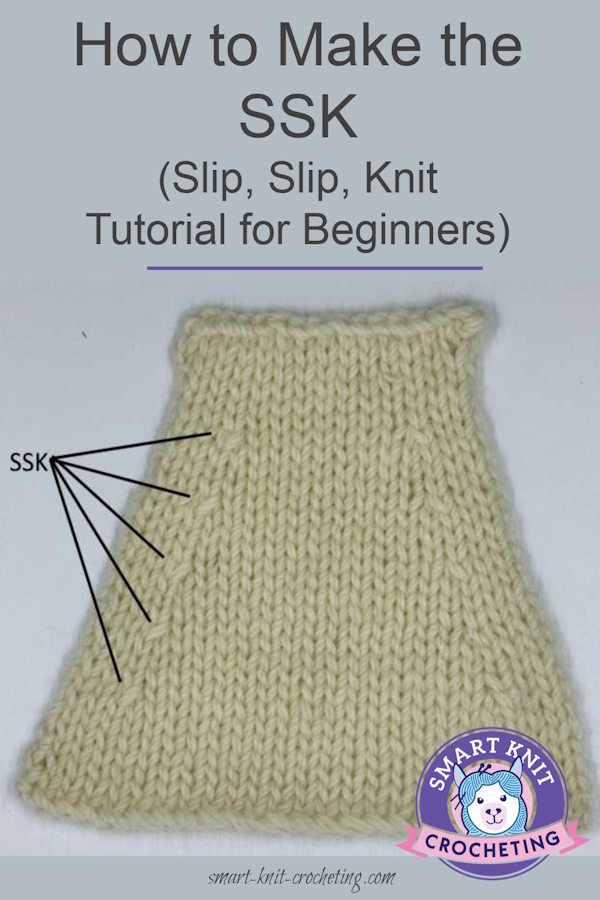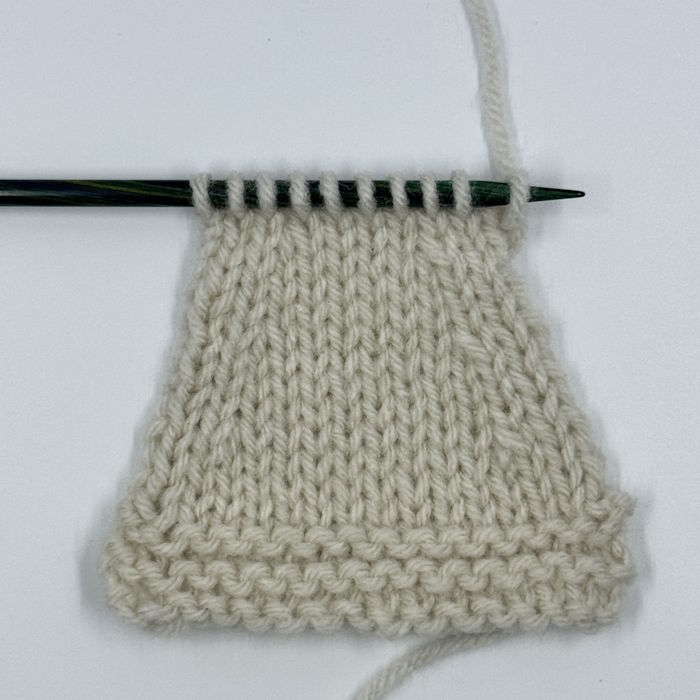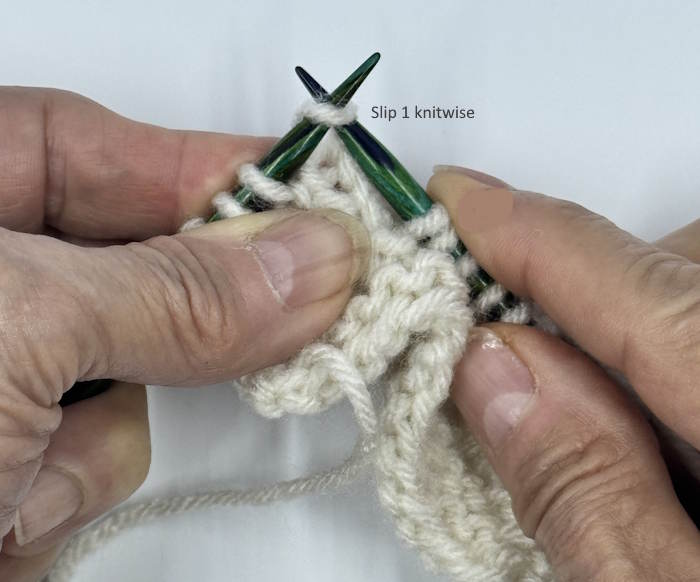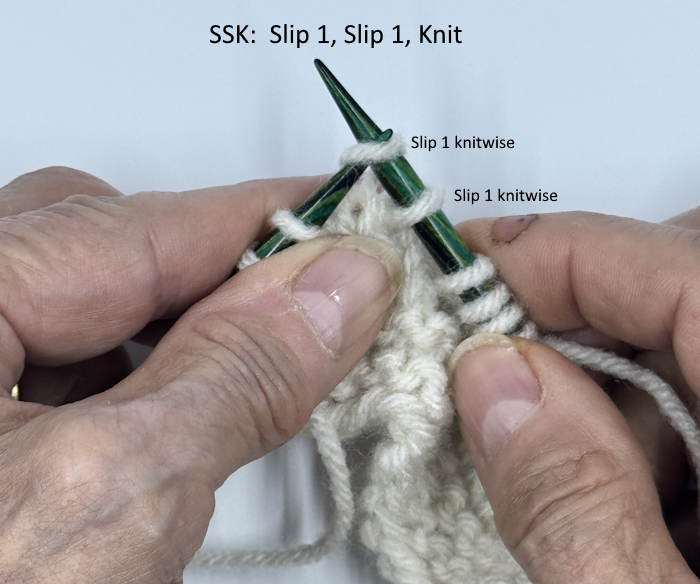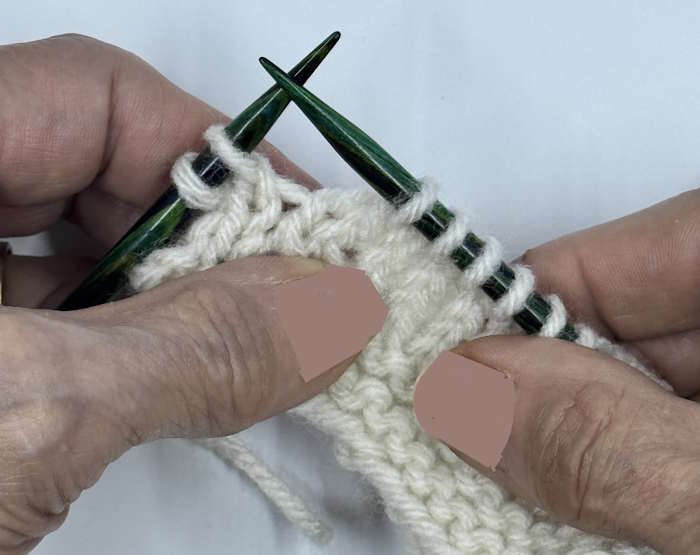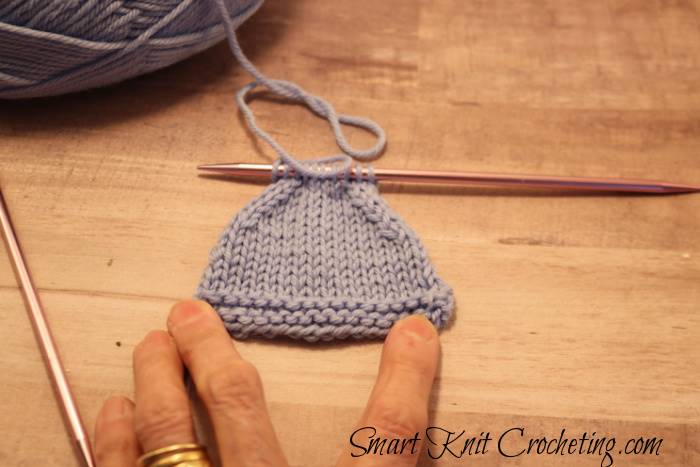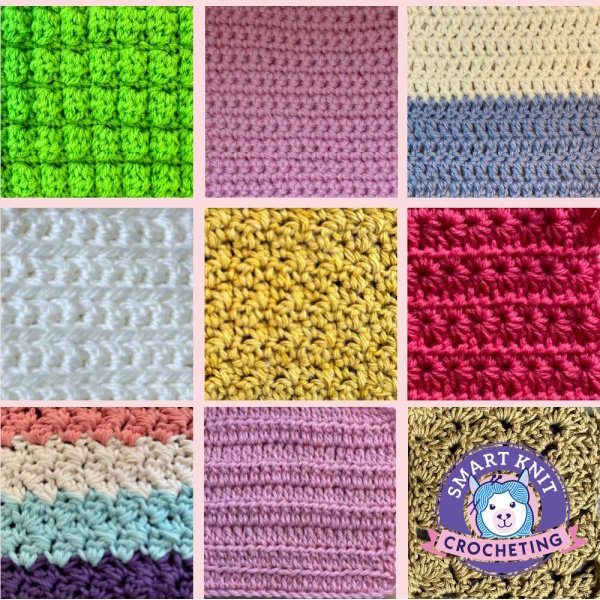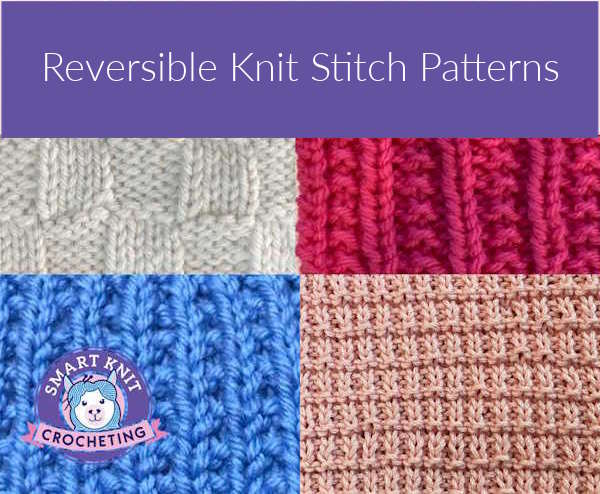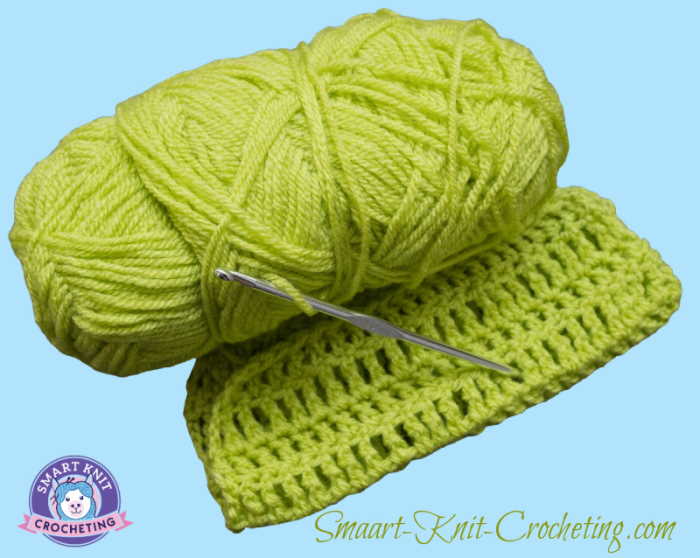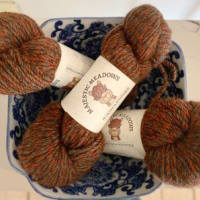- Home
- How to Knit: Basics
- SSK in Knitting
Guide to SSK in Knitting: What It Is, How to Do It, and Why It Matters
The SSK (Slip, Slip, Knit) is one of those small but powerful techniques that make your knitting look polished and professional. This left-leaning decrease shapes necklines, sleeves, and lace patterns so they mirror the right-leaning K2tog.
In this step-by-step tutorial, you’ll learn exactly how to do the SSK, why it matters, and how to make your decreases neat and consistent — every single time.
What is the SSK in Knitting?
SSK stands for Slip, Slip, Knit. It is a left-slanting decrease used to reduce your stitch count by one while shaping the fabric in a particular direction. By “left-slanting,” we mean that the decrease slants toward the right when looking at the right side of the fabric.
Its purpose is to create a decrease that mirrors the left-leaning K2tog (Knit Two Together).
- Effect: Decreases the stitch count by 1 while shaping your knit’s edge or internal structure.
- Used in: Shaping sleeves, necklines, lace patterns, raglan decreases, and more.
- V-neck sweater: you need mirror-image decreases on each side to shape that beautiful “V.” SSK is your left-side solution.
Common Decrease Abbreviations in Knitting
| Abbreviation | Meaning |
|---|---|
| SSK | Slip, Slip, Knit – left-leaning decrease |
| SKP | Slip, Knit, Pass Slipped Stitch Over – also left-leaning |
| K2tog | Knit 2 Together – right-leaning decrease |
How to Do the SSK Step-by-Step (Slip, Slip, Knit)
Step 1
- Slip 1 knitwise (as if you were going to knit it) from the left needle to the right needle.
Step 2
2. Slip the next stitch knitwise as well.
Step 3
3. Insert the left needle into the front of the two slipped stitches on the right needle from left to right.
 Insert the left needle into the front of the two slipped stitches on the right needle from left to right.
Insert the left needle into the front of the two slipped stitches on the right needle from left to right.Step 4
Knit them together through the back loop, then pull them through.
You’ve now completed an SSK!
Why Each Step Matters
- Slipping knitwise twists the stitches, causing them to lean to the left when knit together.
- Knitting through the back loop ensures the stitch lies flat and slants properly, rather than appearing twisted.
Why and When to Use the SSK Decrease
- It gives a smooth, clean left-leaning decrease.
- It creates symmetry in garment shaping when paired with a left-leaning K2tog.
- It is essential for balanced lace and cable patterns.
- Commonly paired with K2tog on the opposite side of a garment or pattern.
- Used in decreasing rows, such as for armholes, necklines, and raglans.
- Found in lace knitting, where directional decreases are part of the aesthetic design.
SSK vs K2tog: Which to Use and When
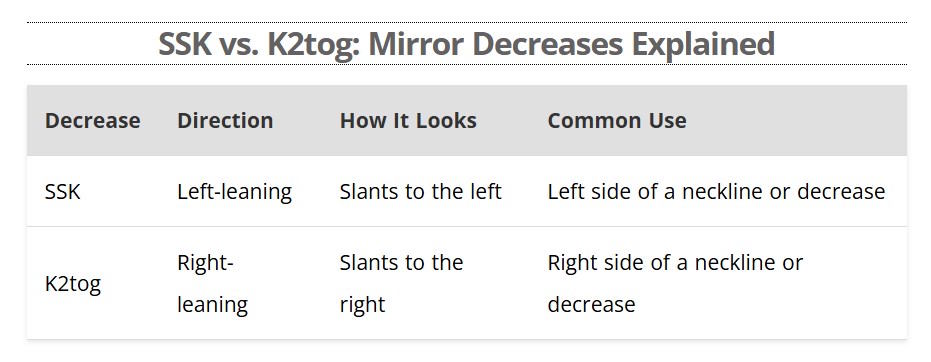
Pro Tip: Always pair these for symmetrical shaping.
Making SSK's More Neatly
If your SSKs look looser or less clean than K2tog, you’re not alone (ask me how I know!).
Here are some techniques (tricks) that helped polish my once-wonky SSKs.
Method 1: Knit Through The Back Loop on Left Needle
Work to the location where you want to make the SSK, then
- Slip 1 knitwise,
- slip 1 purlwise, return both to the left needle,
- knit through the back loops.
This technique improves stitch alignment and tightens the decrease. As you can see, it is still noticable but less so than the typical way we make the SSK.
Be careful to work on the tips of the needles—slipping too far down can stretch the stitches, making them larger than their neighbors.
Use the SKP (Slip, Knit, Pass)
Use SKP for comparison
SKP = Slip 1, Knit 1, Pass Slipped Stitch Over.
This produces a similar left-leaning decrease but may look slightly different depending on yarn or tension.
- Slip one knitwise
- Knit one from left needle
- Pass slipped stitch over the knit stitch on the right needle and off the needle.
Learn more about the SKP (Slip, Knit, Pass)
SSK by Slip 1 knitwise, Slip 1 Purlwise
This is my favorite method and makes the SSK nearly impossible.
Knit to the location where you want to place your SSK
- Pass first stitch knitwise
- Pass second stitch purlwise
- Insert left needle behind these two slipped stitches and knit together.
This method is very similar to the traditional method except that you don't slip two stitches knitwise. Rather, you slip the first stitch knitwise and the second stitch purlwise.
Common SSK Variations (and How They Differ)
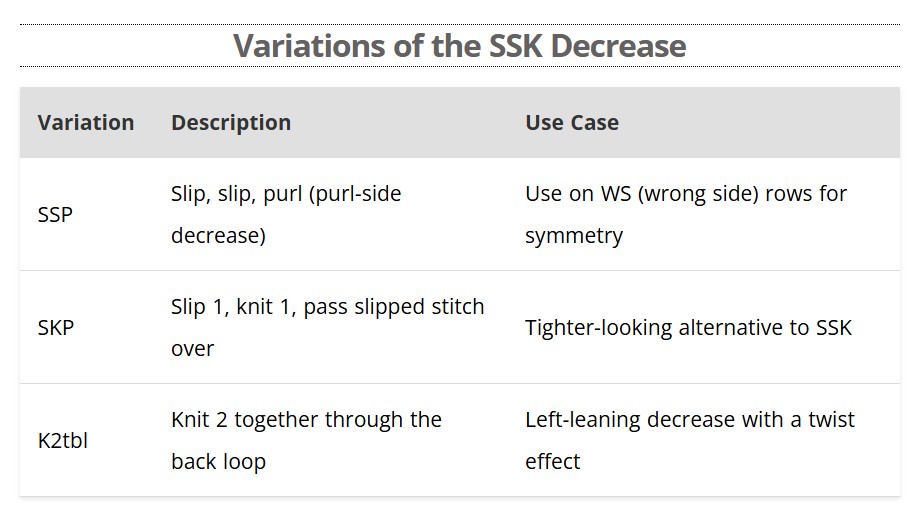
Where to Place Your SSK
SSK is a left-slanting decrease, so it’s typically worked on the right side of the fabric. However, do not place it in the first stitch of the row.
Why?
Decreases (and increases) should never be placed in the first or last stitch on rows that will be seamed. Doing so makes seaming harder and less tidy. Instead, put your SSK in the second or third stitch from the beginning or end of the row for best results.
When NOT to Use SSK
There are times when SSK may not be the best left-leaning decrease:
- In bulky yarns, SSK can look loose and uneven.
- In tightly knit lace, SKP may produce crisper, more defined decreases.
- When speed is critical, SKP may be faster for some knitters than SSK.
How to Fix Loose or Uneven SSKs
Problem: Your SSK looks too loose.
- Slip the second stitch purlwise instead of knitwise.
- Improve your ssk tension by tugging slightly on the working yarn as you knit the stitches together.
- Work on the tips of your needles to avoid stretching the stitch.
Problem: The decrease doesn’t slant.
Make sure you're knitting through the back loops of both slipped stitches.
Problem: It looks different from K2tog.
That’s normal! It leans in the opposite direction.
If it still looks inconsistent, try the improved SSK method.
Reading SSK in Knitting Charts and Patterns
Charts
In knitting charts, the SSK decrease knitting symbol is usually marked as a left-slanting slash: \ or labeled as “ssk.”
In contrast, K2tog is marked with a right-slanting slash: /.
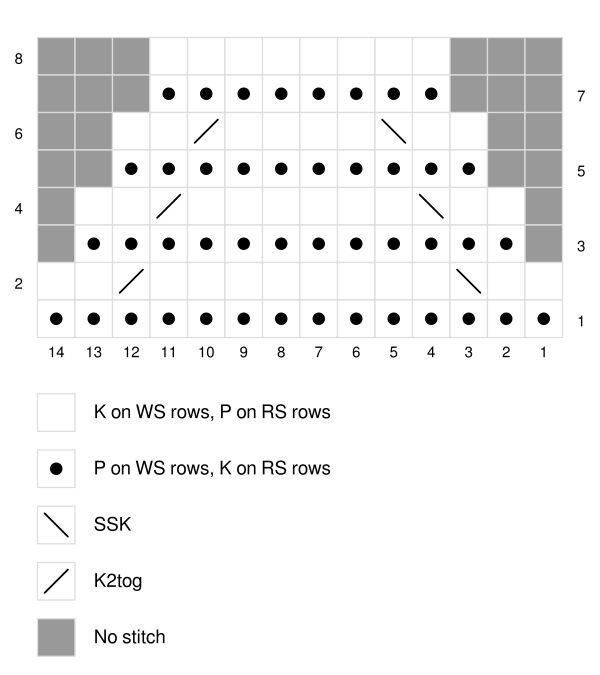
Learn more about how to read knitting instructions using charts.
Written Pattern: SSK Abbreviation in Patterns
In written patterns, SSK is often abbreviated as:
- ssk
- sl1, sl1, k1 tbl (knit 1 through the back loop)
- See below for a written pattern
SSK vs SKP: The Historical Perspective
The need for mirrored decreases has always been important in garment construction. Historically, SKP was more commonly used.
However, SSK gained popularity for its smoother execution and less bulky result. Today, it's the go-to left-leaning decrease in most modern patterns.
Summary: Why SSK is a Must-Know for Every Knitter
- SSK is essential for clean, symmetrical shaping in everything from garments to lace.
- It mirrors the right-leaning K2tog, creating visual and structural balance.
- Though simple, refining your SSK technique can dramatically elevate your knitting quality.
- Variations like SKP, SSP, and improved SSK allow you to adapt to yarn type, tension, or design style.
Practice Swatch: Try the SSK Yourself
Here’s a quick swatch tutorial you can use before adding this technique to a real project.
Materials Needed:
- Scrap yarn
- Knitting needles
- Scissors
Instructions:
Cast on 14 stitches using the long-tail cast-on method.
Row 1 (RS): Purl across.
Row 2: Knit across
Row 3: Purl Across
Row 4: K2, K2tog, knit to the last 3 stitches, SSK, K2. (12 stitches)
Row 5: Purl across
Row 6: K2, SSK, knit to the last three stitches, K2tog, K2. (10 stitches)
Row 7: Purl across
Row 8: K2, SSK, knit to the last three stitches, K2tog, K2. (8 stitches)
Row 9: Purl across
Row 10: K2, SSK, knit to the last three stitches, K2tog, K2. (6 stitches)
Row 11: Purl Across
Bind off.
This creates a centered double decrease swatch so you can clearly see how SSK and K2tog mirror each other.
FAQs About SSK in Knitting
How do I know when to use an SSK?
How do I know when to use an SSK?
Patterns usually tell you when to use an SSK. It’s most often used on the left side of a project when you want your decrease to lean left. For example, in a sweater neckline or a hat crown, SSK shapes one side while K2tog shapes the other.
Can I do SSK when knitting in the round?
Can I do SSK when knitting in the round?
Yes! You work it the same way as when knitting flat. Just remember that when you’re knitting in the round, you’re always on the right side, so the SSK will still lean left on your project.
What if my SSK looks twisted or uneven?
What if my SSK looks twisted or uneven?
That can happen if you accidentally twist one of the slipped stitches. Try slipping both stitches knitwise before knitting them together through the back loop. And don’t forget — a gentle tug on the working yarn after each SSK helps even things out.
Can I use SKP instead of SSK?
Can I use SKP instead of SSK?
Yes, you can. SKP (Slip, Knit, Pass the Slipped Stitch Over) creates a similar left-leaning decrease. Some knitters prefer one over the other because the look can vary slightly depending on your yarn or tension.
Do I use SSK in lace patterns?
Do I use SSK in lace patterns?
Definitely, many lace designs use SSK together with yarn overs to keep the pattern balanced. It’s one of the most common decreases in lace knitting.
What’s the best way to practice SSK?
What’s the best way to practice SSK?
Knit a small swatch with several rows of plain knitting. Then try a row with SSKs on one side and K2togs on the other. This helps you see how each slants and how they mirror each other.
Updated November 2025
Conclusion: Mastering the Left-Leaning Decrease
Whether you're shaping a sweater or crafting delicate lace, SSK offers precision, symmetry, and control. By understanding its mechanics, use cases, and alternatives, you’ll be equipped to make confident decisions that enhance the appearance and structure of your work.
Pin for Future Reference
